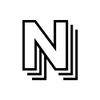The Oldest Odin Inscription in the World Found in the Vindelev Gold
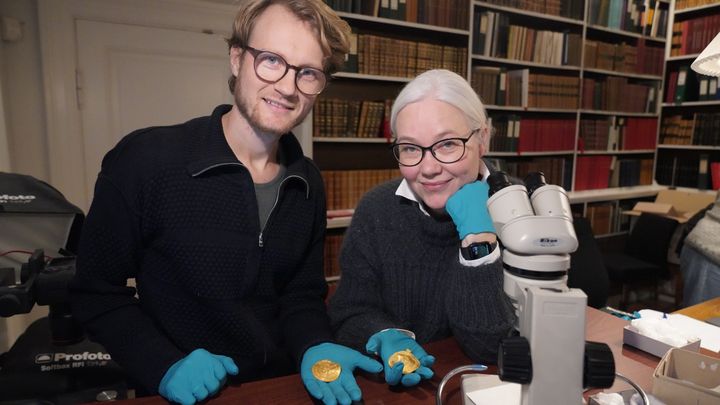
The announcement about a year and half ago of one of the biggest, richest and most beautiful hoards of gold at Vindelev near Jelling caused quite a sensation. It turns out that these treasures concealed yet another surprise.
On one of the gold bracteates (thin, ornamental gold discs), writing experts discovered the world’s oldest inscription featuring the name Odin, the main god of Norse mythology. Part of a sentence – “He is Odin’s man” – refers to the portrait on the bracteate of an unknown king or overlord, whose name (or nickname) may have been “Jaga” or “Jagaz”. This means that the gods we know from Norse mythology were already familiar at the beginning of the 5th century: 150 years earlier than previously established.
It was the National Museum of Denmark’s runologist/writing expert, Lisbeth Imer and the linguist, Krister Vasshus who made the discovery.
“The runic inscription was the most difficult I have ever had to interpret in all my years as a runologist at the National Museum of Denmark. But the discovery is also absolutely amazing. It is the first time in the history of the world that Odin’s name was mentioned. This means that Norse mythology can now be dated all the way back to the early 5th century. This just makes the Vindelev hoard even more spectacular. Since the golden horns, I’ve never seen such well executed runes and such a long text on a Danish find from this period. It may help us understand other prehistoric runic inscriptions, which we haven’t yet been able to read,” says Lisbeth Imer.
“We have black-and-white evidence. It’s a huge discovery. I’m simply ecstatic. This type of inscription is extremely rare. We may be lucky to find one every 50 years. This one turns out to be a chapter in world history,” says Krister Vasshus, a specialist in the history of ancient languages in Scandinavia.
“The discovery is yet another breakthrough, providing us with vital new knowledge about the history of Denmark,” says Rane Willerslev, Director of the National Museum of Denmark. “It’s an incredible discovery that provides us with new insight into the past, nuancing and rewriting the history of Denmark – in this case, the history of the world too. It’s wonderful that once again this museum’s researchers have achieved results that will attract the attention of the entire world.”
Hitherto, the oldest inscription featuring the name of Odin was on a brooch from the latter half of the 6th century, found at Nordendorf in southern Germany. In Denmark, the oldest inscription to date is on an amulet made from a piece of human skull found in Ribe. It dates back to the beginning of the 8th century.
Difficult to interpret the writing
The runic inscription is difficult to decipher, because the bracteate is worn, and in significant places the runes have almost disappeared. The text was also written without spaces between the words and is in a language that is more than 1,500 years old and has evolved radically since them.
“Not only has the structure of the language developed tremendously since the 5th century, but many words have also fallen out of use,” says Krister Vasshus. “Generally, we find short runic inscriptions with fairly comprehensible content, but this time the text is long and consists almost entirely of new words. That made it extremely difficult to interpret. In itself, the interpretation is quite a major achievement, which will help us understand other runic inscriptions – on other bracteates, for instance.”
More than 1,000 bracteates have been found in Northern Europe, more than 200 of them with inscriptions. But the vast majority of runic inscriptions on bracteates make no linguistic sense. The runes tend to be 2-3 mm high, and because they carry many pictures there is not much space to write on. The inscriptions consist mostly of short, sacred words, or they are distorted or warped copies of an inscription that once made sense, but was lost.
Had a copy for 170 years
The interpretation of the runic inscription has already solved several mysteries.
The Vindelev hoard contains another bracteate, who’s inscription is a copy the bracteate with the Odin inscription on it. This inscription is poorly executed, probably by someone with limited knowledge of runes, given that the runes are less distinct and many of them are distorted. The bracteate with the copy inscription turns out to have a ‘twin’ made with an identical stamp, found in 1852 at Bolbro on the outskirts of Odense. The National Museum of Denmark has had it in their collection for 170 years, but could never decipher the script – until now!
The bracteate is on display in the National Museum of Denmark’s gold room.
A third bracteate from the Vindelev trove also has a ‘brother’ from Funen, first recorded in 1689. This bracteate may also refer to Odin, since its runic inscription was interpreted as “The High One” – one of Odin’s numerous nicknames. But Lisbeth Imer and Krister Vasshus say that this is a misinterpretation. Because on the Vindelev bracteate the runes are sharper and more distinctly carved, so it is clear that it actually says: “The Beloved”. This could be a nickname for the horse or the person portrayed on the bracteate.
For about 150 years, researchers have been discussing whether the figure, which features on many bracteates, is a depiction of Odin. But given that the subject is “Odin’s man” and (nick)named “Jaga” or “Jagaz”, it is probably a king: as with Roman medallions, on which Cæsar is portrayed. The man in question had been given divine legitimacy by Odin, which may mean that he was also the supreme cult leader of the community.
Who was “Odin’s Man”?
Apart from runic inscriptions, we have no written sources from 5th-century Denmark, so we know very little about who this “Odin’s man” and “Jaga” or “Jagaz” was. However, everything would seem to indicate that he was very important in the 5th century. There is a huge amount of gold in the Vindelev hoard, and the gold bracteates are far larger and thicker than similar ones. They were probably worn on a kind of mayoral chain, thereby highlighting the status of the person wearing it.
The gold was imported from the south, and the Roman medallions in the hoard, suggest a strong network down through Europe. The king clearly had contact with many other areas of both Denmark and Europe, because similar bracteates or bracteates with identical stamps have been found on Funen and in North Jutland, West Jutland and northern Germany – not to mention the imperial medallions, which were also found in Vindelev. They have parallels as far away as central Germany and Poland.
You can watch the moment when the researchers discovered the Odin inscription in the DRTV documentary series Gåden om Odin (The Odin Riddle). Together with the rest of the Vindelev hoard, the bracteate with the world’s oldest Odin inscription is on display at the National Museum of Denmark in the exhibition The Hunt for Denmark’s Past. Read more about the exhibition here.
Contact:
Lisbeth Imer, runologist/writing expert, The National Museum of Denmark, +45 4120 6113, Lisbeth.Imer@natmus.dk
Krister Vasshus, linguist and specialist in the history of ancient languages in Scandinavia, +45 6024 2744, krister.vasshus@gmail.com
Keywords
Contacts
John Fhær Engedal NissenKommunikationsmedarbejderNationalmuseet
Tel:41 20 68 49jni@natmus.dkImages
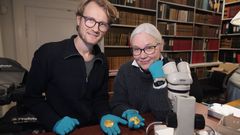
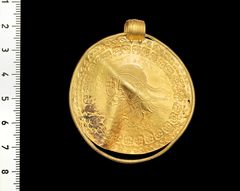
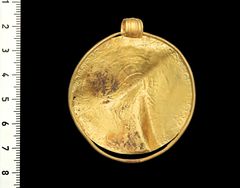
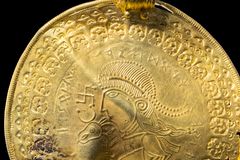
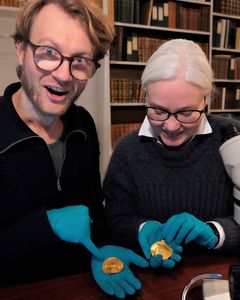

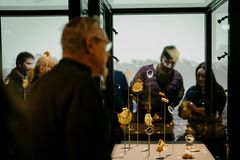
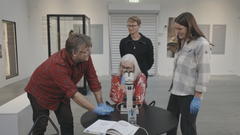
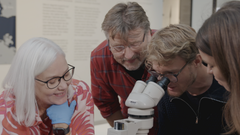
About Nationalmuseet - Museer, forskning og bevaring
Nationalmuseet er Danmarks kulturhistoriske hovedmuseum. Det ligger i Prinsens Palæ i København, hvor det har haft adresse siden 1849.
Nationalmuseet består foruden af besøgsstedet i København også af en forsknings-, samlings og bevaringsafdeling, der tager sig af konservering og bevaring af Danmarks kulturskatte samt forskning i både kulturhistoriske og naturvidenskabelige emner.
Der er 18 besøgssteder knyttet til Nationalmuseets organisation, som Rane Willerslev er direktør for.
Subscribe to releases from Nationalmuseet - Museer, forskning og bevaring
Subscribe to all the latest releases from Nationalmuseet - Museer, forskning og bevaring by registering your e-mail address below. You can unsubscribe at any time.
Latest releases from Nationalmuseet - Museer, forskning og bevaring
Klimaengagerede unge sejler igen på tøjbyttetogt - besøger 13 byer30.6.2025 08:32:41 CEST | Pressemeddelelse
Nationalmuseets skonnert Bonavista er lastet med klimaengagerede unge og genbrugstøj og sejler rundt til 13 danske byer, hvor der bliver opstillet til tøjbyttemarked.
Anders Foghs jakkesæt fra malingangreb kommer på Nationalmuseet3.6.2025 05:30:00 CEST | Pressemeddelelse
Den tidligere statsministers jakkesæt fra malingangrebet i 2003 kommer nu på Nationalmuseet og bliver en del af den danske kulturarv. Genstanden vidner om forandret politisk aktivisme i Danmark i forbindelse med vores militære engagement i udlandet.
’Arkæologiens Oscar’ går til sønderjysk arkæolog23.5.2025 16:14:10 CEST | Pressemeddelelse
Erik Westerby-prisen går i år til Lennart Secher Madsen, arkæolog ved Museum Sønderjylland, for sit lange, seje træk i arkæologiens tjeneste og for at fremhæve Sønderjyllands særlige status. Lektor Tim Flohr får rejselegat for sin utraditionelle, men inspirerende tilgang til arkæologien.
New research: Baby toys were mass produced in Early Bronze Age Syria19.5.2025 08:52:49 CEST | Pressemeddelelse
Scholars at the National Museum of Denmark in collaboration with Archéorient CNRS in France and the University of Milan in Italy have identified 4500-year-old baby rattles that were produced by professional potters in an ancient city in Syria. They were probably sold at the market to parents who wanted to entertain – or distract – their children.
Ny forskning: Baby-legetøj blev masseproduceret i oldtiden19.5.2025 08:52:17 CEST | Pressemeddelelse
Forskere på Nationalmuseet har identificeret 4.500 år gamle baby-rangler, som blev produceret af professionelle pottemagere i en oldtidsby i Syrien. De blev formentlig solgt på markedet til forældre, der ville forkæle – eller distrahere – deres børn.
In our pressroom you can read all our latest releases, find our press contacts, images, documents and other relevant information about us.
Visit our pressroom